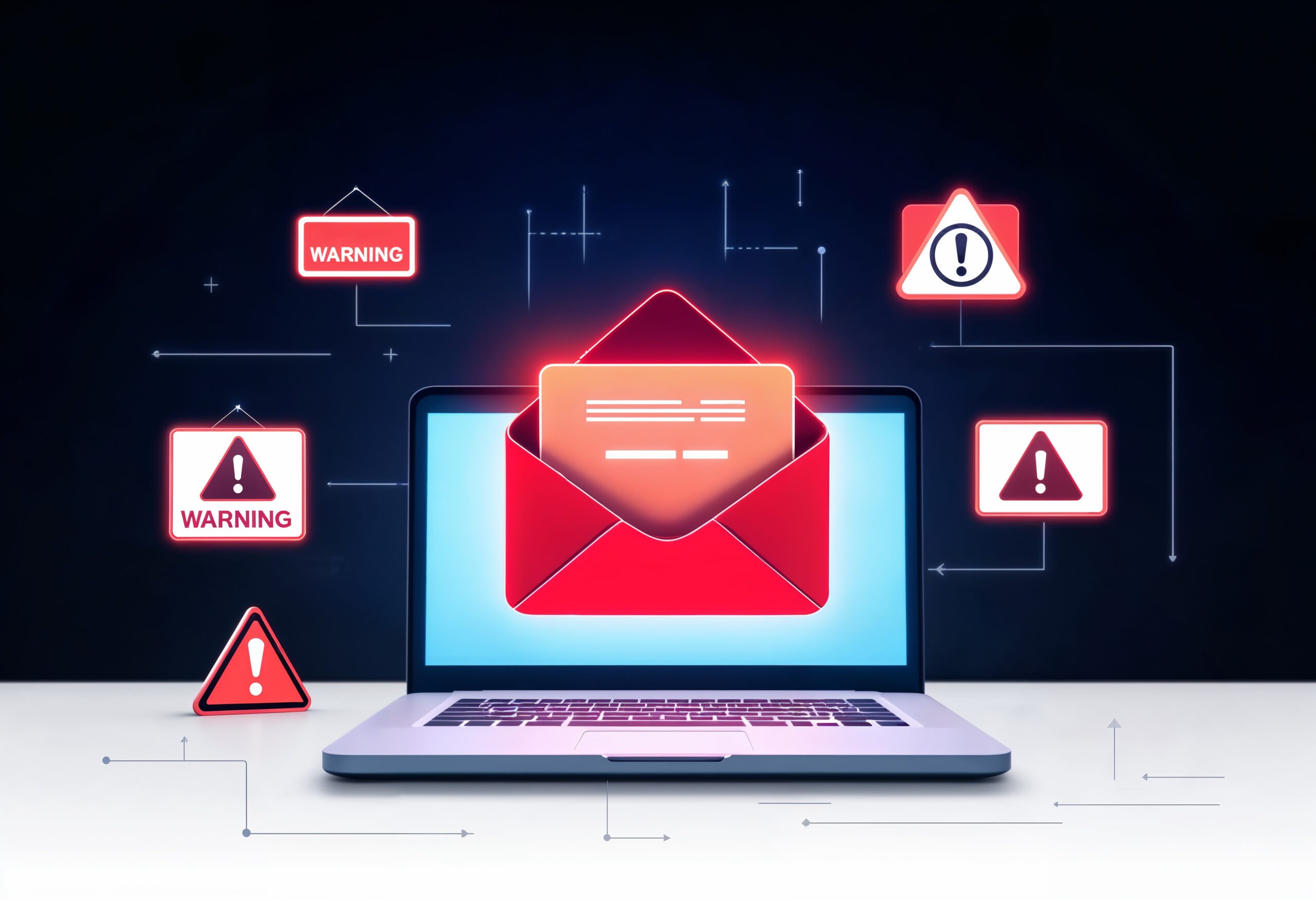Stop Spam Email Signups: 5 Proven Ways to Protect Your Email List
I hope you enjoy this blog post. If you want Hello Bar to grow your leads, click here.
Author:
mansi
Published
November 18, 2025

Table of Contents
Your email signup form should bring in real people who want to hear from you. Instead, you might be dealing with something else entirely—bots flooding your forms with garbage addresses that wreck your sender reputation and cost you money.
These automated programs don’t care about your content. They’re just programmed to fill out forms, often hundreds at a time. The result? Your email list gets polluted with addresses that will never open your emails, causing inbox providers to question whether you’re a legitimate sender.
The good news is you don’t need to be a tech expert to stop spam email signups. A few straightforward methods can block most fake submissions before they damage your list. Let’s look at five practical ways to protect email list from these automated attacks.
What Happens During a Bot Attack
Bot attacks happen when automated programs target your signup forms. These aren’t random. Someone programs these bots to either mess with your email list quality or take advantage of whatever you’re offering at signup—free trials, discount codes, downloadable resources.
The damage shows up in several ways. Your email deliverability drops because you’re sending to addresses that don’t exist or never engage. You waste money storing fake contacts in your email platform. Your sender reputation takes a hit, which means even your real subscribers might not see your emails in their inbox.
Spotting an attack isn’t difficult if you know what to look for. You’ll see hundreds of signups within minutes. Multiple submissions come from the same domain or IP address. People sign up with disposable email addresses or complete nonsense in the name fields. Your bounce rates shoot up while open rates tank.
If any of this sounds familiar, you need to act fast to stop spam email signups before they cause more harm.
1. Add CAPTCHA to Your Forms

CAPTCHA tests separate humans from bots. You’ve probably seen these yourself—clicking a checkbox to prove you’re not a robot, or identifying images that contain traffic lights.
The technology works by analyzing user behavior and signals that bots can’t easily replicate. Modern versions like reCAPTCHA can often verify users in the background without requiring any action at all. When the system suspects a bot, it blocks the form submission.
Setting up CAPTCHA is straightforward. You just need to enable the reCAPTCHA option in your form settings. The system handles the rest, using algorithms to determine whether each visitor is likely human or automated.
Some people worry that CAPTCHA creates friction in the signup process. The truth is that most legitimate users barely notice it. Meanwhile, it stops the vast majority of automated attacks trying to stop spam email signups from succeeding.
The protection is immediate. Once CAPTCHA is active, bots can’t easily submit your forms anymore. You’ll notice the difference right away—fewer fake signups, cleaner data, better engagement rates from your actual subscribers.
2. Check Email Addresses in Real Time

Real-time email verification catches problems the moment someone hits submit. The technology connects to your signup form and instantly checks whether the email address actually exists and can receive mail.
This helps in two ways. First, it stops spam email signups from bots using obviously fake addresses. Second, it catches honest mistakes from real people who accidentally type their email wrong.
When someone enters a non-existent address, they see an error message immediately. Real users can fix the typo and resubmit. Bots trying to flood your form with garbage addresses get blocked before they ever touch your list.
The verification happens through an API that checks email syntax, confirms the domain exists, and verifies the specific address can receive messages. All of this takes less than a second. Your signup process stays smooth for legitimate users while fake submissions get stopped cold.
You can connect forms to email verification services that handle the technical work. Once configured, every submission gets checked automatically. No manual review needed. No fake addresses slipping through.
This method works particularly well combined with other protections. While CAPTCHA stops obvious bots, real-time verification catches the more sophisticated attempts to stop spam email signups that try to look legitimate.
3. Use Honeypot Fields
A honeypot field is a trap that only bots fall into. It’s a form field that’s invisible to human visitors but appears normal to automated programs scanning your page.
Here’s how it works. You add an extra field to your form and use code to hide it from view. Humans never see it, so they never fill it out. Bots scan your form’s HTML code, see what looks like a regular field, and fill it in automatically.
When a submission includes data in the honeypot field, you know it came from a bot. You can then block that signup or add it to a list for removal.
Setting up a honeypot requires some basic HTML editing. You create a custom field, label it something like “leave this field blank,” then modify the form code to make it invisible using CSS. The field stays functional in the code but doesn’t display on the actual page.
The beauty of this method to stop spam email signups is that it’s completely invisible to your real subscribers. There’s no extra step, no test to pass, no friction whatsoever. Good user experience for humans, automatic trap for bots.
Honeypots work best against simpler bots that automatically fill every field they find. More sophisticated bots might skip hidden fields, which is why you want multiple layers of protection to fully protect email list.
4. Turn On Double Opt-In
Double opt-in requires people to confirm their subscription by clicking a link sent to their email. Nobody gets added to your list until they complete this confirmation step.
This is one of the most effective ways to stop spam email signups because bots don’t check their email. They submit the form and move on. Without that confirmation click, they never actually join your list.
The process is simple. Someone fills out your form. They immediately get an email asking them to confirm. They click the confirmation link. Only then do they become an active subscriber.
Some bots have gotten smarter and can programmatically confirm opt-in emails, but most can’t. Even with those advanced bots, double opt-in still blocks a significant portion of automated attacks.
There’s a common concern that double opt-in hurts conversion rates. The reality is that it gives you subscribers who actually want your emails. These people took an extra step to confirm their interest. They’re more likely to open your messages and less likely to mark you as spam.
You can reduce any friction for real subscribers by giving them immediate access to lead magnets on the form’s success page. Then deliver the full resource again after they confirm. This way, legitimate users don’t feel like they’re being made to jump through hoops to protect email list.
Just toggle the setting on in your form configuration. The confirmation emails get sent automatically, and subscribers only join your list after clicking through.
5. Clean Your List with Verification Tools

Even with preventive measures in place, some fake addresses might slip through. Regular list cleaning removes these problematic contacts before they damage your deliverability.
Email verification tools analyze your entire subscriber list to identify invalid, non-existent, or suspicious addresses. They check syntax, verify domains, and flag addresses known to be fake or disposable.
The process is automated. You export your list, run it through the verification tool, and get back a clean list with the bad addresses removed. Some services integrate directly with your email platform to make this even simpler.
Verification catches several types of problems. Obviously fake addresses that bots created. Typos from real people that will bounce. Addresses that once worked but no longer exist. Spam traps set up by inbox providers to catch senders with poor list hygiene.
Regular cleaning is essential to protect email list long-term. Even the best prevention methods won’t catch everything. Running verification every few months keeps your list healthy and your sender reputation intact.
You can also set up automated removal for subscribers who never engage with your content. If someone hasn’t opened any of your emails in six months or a year, they’re probably not a real active user. Removing them helps your overall metrics and reduces costs.
The combination of upfront prevention and regular cleaning creates a system where fake addresses rarely cause problems. You stop spam email signups at the form level, then catch any stragglers before they impact your sending reputation.
Also read our blog on Email Collection: 17 Best Practices to Exponentially Grow Your Email List
Why You Can’t Ignore Fake Signups
Some people figure that extra subscribers, even fake ones, aren’t really hurting anything. This thinking is wrong and expensive.
Inbox providers track how subscribers interact with your emails. When you consistently send to addresses that never open or engage, providers notice. They start assuming your emails aren’t wanted. Your messages get filtered to spam, even for subscribers who do want them.
Bounce rates matter too. Sending to non-existent addresses increases bounces. Too many bounces, and inbox providers like Gmail and Yahoo will throttle your sending or block you entirely.
Then there’s the cost factor. Email platforms charge based on subscriber count. Every fake address on your list increases your monthly bill for zero benefit. If you have thousands of bot signups, you might be paying significantly more than necessary.
Spam traps present another risk. These are email addresses that inbox providers use specifically to identify spammers. If a bot signs you up with a spam trap address and you send to it, you’re flagged as a potential spammer. Your deliverability drops across the board.
There’s literally no upside to keeping fake signups. They cost money, hurt deliverability, and provide zero engagement. The effort to stop spam email signups and remove existing fake addresses pays for itself immediately in better email performance and lower costs.
Taking Action Now
Bot attacks on signup forms are frustrating but manageable. The methods outlined here—CAPTCHA, real-time verification, honeypot fields, double opt-in, and regular list cleaning—work together to stop spam email signups before they cause problems.
Start with the easiest implementations first. Enable double opt-in and add CAPTCHA to your forms. These two steps alone will block most automated attacks. Then add real-time verification for another layer of protection.
Set up honeypot fields if you have access to your form’s HTML code. Run your existing list through a verification tool to clean out any fake addresses already there. Set up monitoring so you notice unusual signup spikes immediately.
The investment of time is minimal compared to the headaches fake signups cause. Better deliverability means your real subscribers actually see your emails. Lower bounce rates keep you in good standing with inbox providers. Reduced costs mean you’re not paying for contacts that will never become customers.
Your email list should be an asset, not a liability full of bot-generated garbage. Take steps today to protect email list, and you’ll immediately see the benefits in engagement, deliverability, and your bottom line.
Conclusion
Fake signups waste your money and wreck your email performance. The good news is that stopping them doesn’t require technical expertise or expensive tools. A few strategic protections keep your list clean and your sender reputation intact, letting you focus on connecting with real people who actually want to hear from you.






